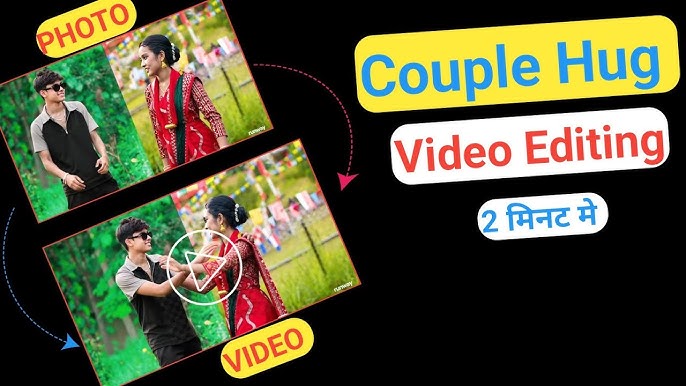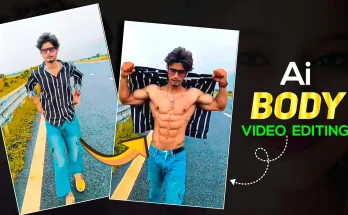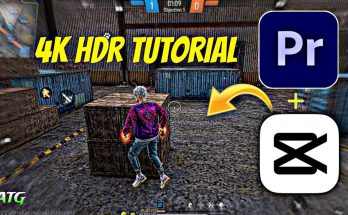In today’s digital age, artificial intelligence (AI) is transforming how we create and engage with content. One of the most exciting areas where AI is making an impact is in video production, especially for generating emotionally impactful content. Whether you’re a content creator, marketer, or simply someone interested in exploring AI’s potential, creating a hugging video with AI can be both a fun and fascinating project. How to Make a Hugging Video with AI.
This blog will walk you through the process of making a hugging video using AI, discussing the tools and techniques you’ll need, how AI can elevate your video, and why this innovative form of content has the potential to transform various industries.
What Is a Hugging Video?
A hugging video typically involves the act of hugging, which symbolizes warmth, affection, empathy, and comfort. These videos are commonly used in personal projects, advertisements, social media, and even virtual events. By leveraging AI, you can create even more engaging and interactive hugging videos, allowing for personalized interactions, virtual characters, and remote hugs that simulate real-life experiences.
Why Use AI for Hugging Videos?
AI offers several advantages for creating hugging videos, including:
- Personalization: AI enables you to customize the video to individual preferences, such as creating specific characters or settings that evoke desired emotions.
- Cost-Effectiveness: AI-driven video production can be far more affordable than traditional methods, eliminating the need for expensive equipment and actors.
- Efficiency: AI tools speed up the video production process, enabling you to create high-quality content in a fraction of the time.
- Customization: You can fine-tune every detail of the video, from the characters’ appearance to the background and animation style.
- No Physical Boundaries: AI can simulate realistic physical interactions, such as hugging, even in virtual spaces, making it ideal for digital environments and remote experiences.
Step 1: Define Your Objective
Before diving into the technical process, it’s essential to define the purpose of your hugging video. What do you want the video to accomplish? Your goal will guide the tools and AI features you use to achieve the best outcome. Some possible objectives include:
- Creating an Emotional Connection: Use the video to connect with your audience on a deeper emotional level.
- Sending Virtual Hugs: Create a video that allows people to send virtual hugs to loved ones or followers.
- Marketing and Advertising: Use hugs to symbolize care and trust in campaigns, such as wellness or charity promotions.
- Entertainment or Simulation: Create fun and interactive experiences with virtual characters expressing affection.
Understanding your objective helps you choose the right AI tools and plan the video’s content.
Step 2: Choose the Right AI Tool for Hugging Video Creation
There are various AI tools available for creating hugging videos, each offering unique features. Depending on your needs, you can use animation software, video-editing platforms, or AI-based motion capture systems. Here are a few options:
1. DeepMotion (AI-Powered Animation)
DeepMotion specializes in motion capture and animation, using AI to track human movement and apply it to 3D characters.
How to use DeepMotion:
- Upload a video of a person hugging, or perform the hug yourself.
- The AI tracks the movement and animates a 3D character.
- Customize the character’s look, emotions, and background.
DeepMotion is perfect for creating realistic 3D hugging animations.
2. Synthesia (AI Video Creation)
Synthesia allows users to generate videos with virtual avatars, which can hug and interact with one another.
How to use Synthesia:
- Choose or create a custom avatar.
- Script dialogue or a message for the avatar.
- Customize the video’s background and animations to make the hug more realistic.
Synthesia is ideal for creating virtual characters that deliver emotional interactions, such as hugs, with your audience.
3. Runway ML (AI-Powered Video Editing)
Runway ML integrates AI with video editing, allowing for motion tracking, scene manipulation, and real-time effects.
How to use Runway ML:
- Upload a hug video or create one with AI-generated characters.
- Enhance the video with AI effects, backgrounds, and real-time adjustments.
Runway ML is perfect for creatives looking to experiment and manipulate videos creatively.
4. Avatarify (Real-Time Face Swap and Animation)
Avatarify allows real-time creation of animated avatars that can perform actions like hugging.
How to use Avatarify:
- Upload a photo or use a real-time feed to create an avatar.
- Apply movements and expressions, such as a hug.
- Integrate the avatar into your video for a more interactive experience.
Avatarify is great for simulating real-life movements and facial expressions with avatars.
Step 3: Record or Create the Hugging Animation
Once you’ve chosen your AI tool, the next step is either to record a real hug or generate an animated hug.
Option 1: Record a Hug with Real People
If you want a natural hug, simply record a real-life hug using a high-quality camera. After filming, upload the footage to the AI tool for editing, motion tracking, and enhancement.
Option 2: Create a Virtual Hug with AI-Generated Characters
If you prefer AI-generated avatars, you can create 3D characters that simulate hugging. These avatars can mimic lifelike movements, offering a range of creative possibilities.
Step 4: Customize Your Hugging Video
After recording or generating the hugging animation, it’s time to personalize your video:
- Choose Backgrounds: Select from various virtual environments, such as a cozy living room or a scenic park.
- Enhance with Music: Add soothing background music or sound effects that complement the emotional tone of the video.
- Personalize Characters: Adjust the characters’ appearance and gestures to better align with your vision.
- Use Visual Effects: Apply effects like lighting or filters to enhance the hug and highlight key moments.
Step 5: Final Editing and Refining
Before exporting your video, review it for final tweaks:
- Trim unnecessary footage.
- Adjust scene transitions.
- Fine-tune audio levels, and add captions or subtitles if necessary.
AI tools often include features like improving video resolution or stabilizing shaky footage, so take advantage of these to enhance your final product.
Step 6: Export and Share Your Hugging Video
Once you’re happy with your video, export it in your preferred format (MP4, MOV, AVI) and upload it to platforms like YouTube, Instagram, or TikTok.
Tips for Creating a Hugging Video with AI
- Experiment with Different AI Tools: Don’t hesitate to try multiple tools to find the one that fits your needs best.
- Focus on Lighting: Whether using real people or AI avatars, lighting plays a crucial role in making the hug feel authentic.
- Keep the Emotion in Focus: The best hugging videos are those that evoke genuine emotion. Ensure the movements and expressions feel natural.
- Align the Message: Make sure the video’s tone and message match the warmth and affection that hugs typically represent.
Conclusion
Creating a hugging video with AI can be a fun, creative, and emotionally impactful project. With the right AI tools, you can simulate lifelike hugs, craft engaging virtual characters, and personalize every aspect of your video. Whether you’re making content for social media, marketing, or personal use, AI offers endless possibilities for bringing your ideas to life.
By following this guide, you can craft a hugging video that resonates with your audience and makes the most of the power of AI. Start creating your virtual hug today!



